Closer Connections
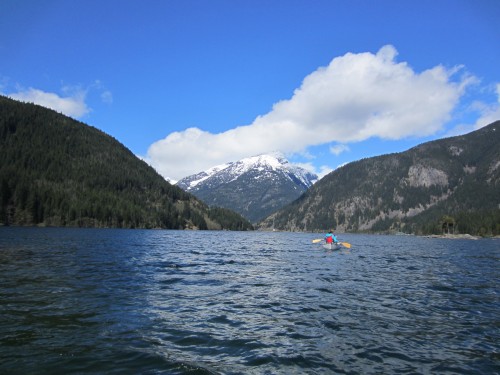
Each season the graduate students at North Cascades Institute go on a retreat. The purpose is relaxation, fun, and to learn a little more about natural history. For the spring season, myself and the other planners decided that getting out and exploring places closer to home would be perfect. A canoe ride across the lake, riparian exploration along the Skagit, and working the land at Blue Heron Farms became the main activities for a three-day stretch in May.
Imagine gray clouds. Cool and wet, the wind licks the skin. The 11 graduate students of Cohort 10 and their fearless leader, Tanya, piled backpacks, fire wood, food, and themselves into six tandem canoes, despite the 180 degree change in weather from the previous day. Spring had teased us with sunny skies while we worked with Mountain School students in and amongst the newly budding plants the day before. Making the best of it, our group set out towards the destination, Thunder Point campground, situated on the other side of Diablo Lake in North Cascades National Park. Canoes slide in, paddles hit water, and the day began.
What an adventure! For a brief moment-in-time I was an early explorer, my heart set on survival and seeing with my own eyes what lay just beyond, all the while being captivated by the expansive view being on the water provides. Upon reaching our camp site, the wind picked up. Some went to draw, meditate, naturalize, and others went to see the lake from a different view.
Up on the knob the dam is visible, as is the wind. For me, it was amazing to be able to capture the wind in my hair, lungs, pores, and on film all at the same time. Wind is one of my top four favorite “elements.”
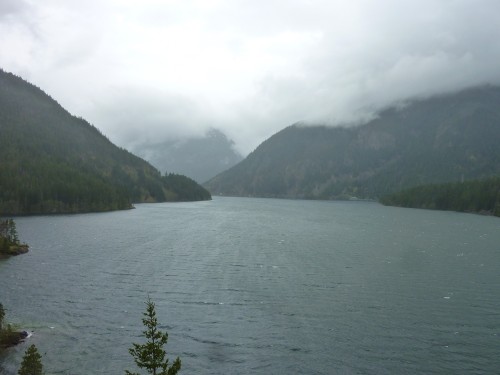
Diablo Lake as seen from Thunder Knob on a windy day. Top photo by Codi Hamblin.
Diablo Lake as seen from Thunder Knob on a clear day.
Thursday greeted us with bird song, blue skies, and the sun. The sun! What a treat for us compared to how we started the day before. Even on a gorgeous sunny day, decay is everywhere. My skin began to tingle as millions of cells began to dance and fall away from me. The water and soil gained heat for the billion of microflora and fauna to eat and die. We all got one day older. It was marvelous to sit on the lake side and feel a connection with everything, abiotic and biotic, around me. We are always changing.
With camp broken down we set sail back home to the North Cascades Environmental Learning Center and the next portion of the trip. The water this time was calmer, and a greener blue than before. It was almost welcoming. Piled into metal beasts that we humans call cars, we drove down valley to Howard Miller Steel Head Park in Rockport. There we met with Dyanne Sheldon, a wetland ecologist with an amazing resume, and listened to the lullaby of the river and gleaned from her endless knowledge about riparian zones and the beauty that surrounds us.
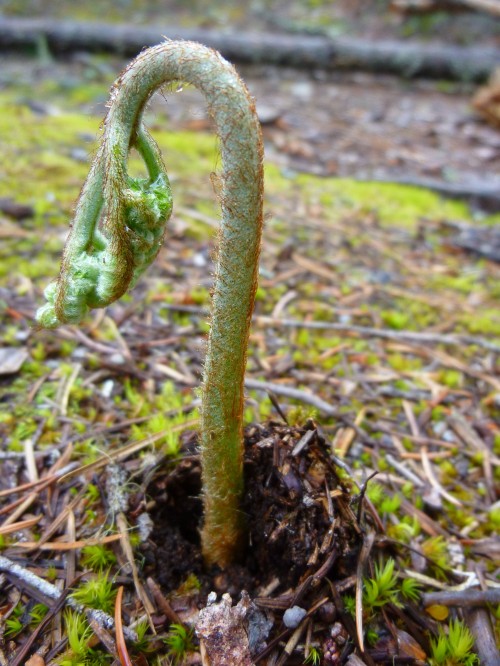 Fern growing from nutrient rich soil.
Fern growing from nutrient rich soil.
The deciduous trees along the banks of the mighty Skagit were ripe with leaves and flowering things. Various shades of green surrounded us. As did that old friend decay. The remnants of mountain tops were all over, brought to us by the river. Rocks, silts, and clays had given us a place to stand while we discussed salmon berries, stinging nettles, and big leaf maples. All the while, ground water flowed beneath us bringing them nutrients.
Just down the road, on fertile Skagit land, is Blue Heron Farms. This quaint and welcoming farm of Mike Brondi and Anne Schwartz provides the Learning Center with some of its local and organic food, such as onions. After a night of invigorating conversation, a fire in the bamboo stands, and sound sleep in a beautiful yoga room, I awoke to another beautiful day in the valley. The mist burned off, chickens clucked, and the trees added that familiar rustling buzz. We set off for a patch of Earth not far from the main house to plant onions. Walla Wallas and Pontiacs were to be placed in rows in the dirt.
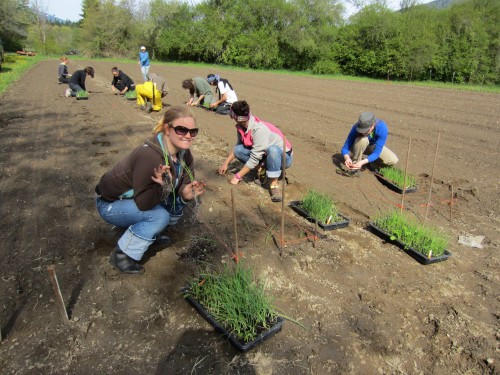
Cohort 10 planting onions at Blue Heron Farm. Photo by Codi Hamblin.
Oh the dirt! How wonderful it was to plunge our hands, built for digging, into the warm, wet mud of a newly plowed field. The smell was refreshing. The mud dried and caked onto my hands, an old familiar feeling I reveled in feeling again. The smooth, silky sensation as I washed it away with Skagit well water from an outside spigot, reminded me that everything gets washed away eventually. To where? Different places. Maybe into a farmer’s onion patch, a mighty river bed, or a camper’s tent. No matter where though, it does go somewhere, and that, to me, is quite the connection.
For the graduate students, this retreat was a time to strengthen the connection we have forged over the last year. It’s true that we’ve only been up here in these mountains for nine months, but we started together in Bellingham last June. Since that time we’ve explored many special places in the North Cascades, each time learning from experts in the field and from each other. At the end of this summer, we’ll return to the sea side, much like the silt of the Skagit, ready for new beginnings in the continued cycle of learning and life, filled by knowledge and friendship.


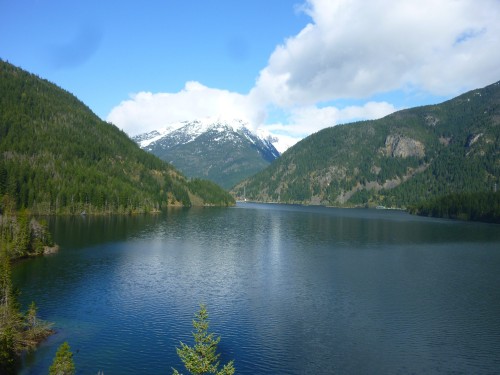
such a rich experience, beautifully written
Great to hear more about your retreat. The initial reports I got were all about the stormy weather. Nice to know about all the other things you accomplished…. and the sun!